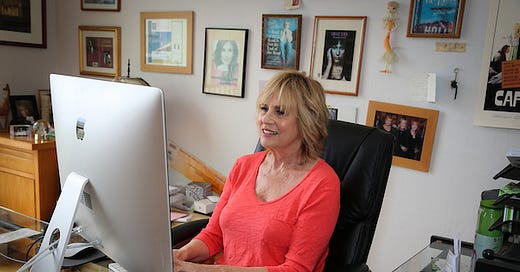Editing Magic: Excerpt from my book: A Friendly Guide to Writing and Ghostwriting
I have rewritten – often several times – every word I have ever published. My pencils outlive their erasers.
- - - Vladimir Nabokov
You finished your first draft. Give yourself a pat on the back. You had an idea, you tamed your inner critic, you ignored the naysayers, you chose a working title, and you kept collapsing your Table of Contents and reorganizing it. You maneuvered the lull of the halfway point. You agonized when you got stuck and didn't know where to go next. You berated yourself in a million different ways, trying to convince yourself that you were no good at this and never would be. But you overrode it, discovered your authentic voice, and found the natural rhythm and flow of your words. When you finally got to the end, you let your readers know where things stood and what might happen in the future.
Now it’s time to take the draft that you so painstakingly created from scratch, idea by idea, word by word, and edit the hell out of it. Editing is like going to the doctor for a checkup. You feel okay when you get there, but you know you could probably feel better. He runs blood panels, checks your heart rate, measures your height and weight, and lets you know if you’re missing any important minerals or vitamins to improve your overall health and wellbeing. You might need to lower your blood pressure or your cholesterol levels. Maybe you need to change your diet, adjust your medications or step up your exercise program to improve your metabolism and heart function. The doctor gives you his recommendations and you leave, vowing to do better. If you choose to fix what needs attention, you can become a healthier version of yourself. If you ignore your doctor’s recommendations, nothing will shift.
Editing a book is tricky business. You scan the pages and see what's there and what's missing. You might need to substitute words, eliminate repetitions, and make your chapters flow better and feel more vital. It's up to you to fix what you can before an editor or a publisher gets their hands on it. The more complete the draft that you submit, the less opportunity the editors have to stick their fingers into what you did and change things in a way that you don’t like.
No one should ever underestimate the amount of courage and discipline it takes to edit a first draft – and every draft thereafter. Ernest Hemingway rewrote the end of his classic book, A Farewell to Arms, a whopping thirty-nine times before he was satisfied. It sounds tedious and I’m sure it was, but look at it as an opportunity to hone your skills and keep improving your work.
Keep in mind that while you edit, if you’re expecting to reach perfection, you’ll never be ready to submit your work. Just assume that when you face your completed manuscript for the first time, if you wrote your first draft with abandon and no filters, if you let your stream of consciousness flow onto the page unchecked, you have what author Anne LaMotte calls “a shitty first draft.” This is good. Everyone writes them. You just need to get something on paper, and a shitty first draft gives you the raw material to work with as you roll up your sleeves and begin to improve on what you have. When you pick up a published book and the text is fluid and clear, you can be sure it didn't start that way. It took countless edits and many hours to make the hard decisions to get that book to its current stage of excellence. Remind yourself that you can get through it. At least you don’t have to face the blank page any more.
When I edit, I feel like a detective, sniffing around for places where the narrative flows and other places where it seems stilted and broken up with confusing or repetitive ideas and descriptions. I like to ask myself, Is there a more compelling way to describe this feeling or situation? Can I make it easier to understand and richer in content? I rewrite jumbled sentences until they feel smooth and clear. I replace words. I find weak segues or the lack of them, I fix them, and I switch paragraphs around until I see the text start coming to life.
Richard MacDonald, celebrated American sculptor, told me that his artistic process starts when he takes the raw clay and starts shaping it with his hands and his tools. Mr. MacDonald has created countless sculptures so he has learned to approach his work with a good attitude and trust his instincts. He keeps at it, shaping and reshaping his work until it begins to match the image in his head. He works on it every day for months and then one day, he breathes life into it and it comes alive.
Master painter Michelangelo described how he did the necessary work while he kept his eye on the prize. Many of us are familiar with this quote:
I saw the angel in the marble and carved until I set him free.
As you de-escalate your anxiety and hunker down to do your edit, there just might be a beautiful book hiding under there, waiting to be set free. Like magic. But even magic takes unswerving attention to detail and a tremendous amount of practice.




